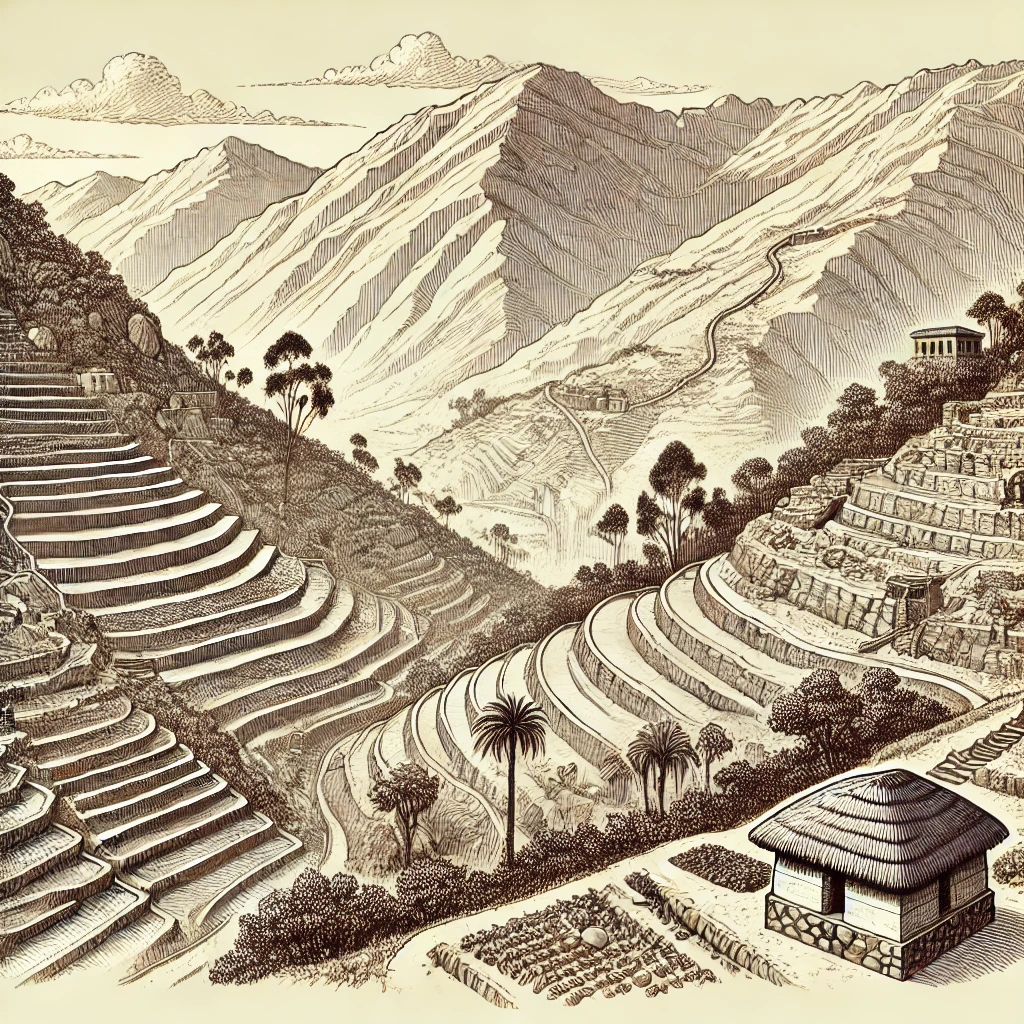Explore the Incas’ geographical challenges, innovative agricultural techniques, and their resourceful use of natural materials for construction and tools in this insightful blog post.The Inca civilization, one of the most remarkable cultures in history, thrived amidst the breathtaking yet challenging landscapes of the Andean mountains. This blog post explores the ingenious ways in which the Incas adapted to their physical environment, turning geographical obstacles into opportunities for growth and innovation. From the steep, rugged terrain that posed formidable challenges to their agricultural practices, to the advanced techniques they employed to sustain their society, the Incas demonstrated remarkable resilience and creativity. We’ll delve into their innovative agricultural techniques and terracing methods, as well as their resourcefulness in utilizing natural materials for construction and tools. Join us on this journey to understand how the Incas not only survived but flourished in one of the world’s most extreme environments.
Geographical Challenges Faced by the Incas
The Inca civilization thrived in a region characterized by a variety of geographical challenges. The Andes Mountains, stretching along the western coast of South America, presented steep terrain, high altitudes, and harsh weather conditions. Living in such an environment forced the Incas to innovate and adapt in order to sustain their population and maintain their empire.
One of the biggest challenges was the diverse climate found in different elevations. The Incas had to cope with everything from tropical rainforests in the lowlands to the frigid temperatures of high-altitude plateaus. To address this, the Incas developed extensive trade networks to acquire resources that were unavailable in certain regions, ensuring that their people had access to necessary goods regardless of the geographical constraints.
The steep slopes of the Andes also made agriculture difficult. Traditional farming methods were less effective in such rugged terrain, leading the Incas to create their remarkable terracing systems. These terraces helped prevent erosion, manage water distribution, and maximize arable land—showcasing their ingenuity in overcoming geographical challenges.
Innovative Agricultural Techniques and Terracing
The Incas are renowned for their exceptional ability to adapt to their physical environment, allowing them to flourish in the rugged terrains of the Andes Mountains. One of their most remarkable adaptations was their implementation of innovative agricultural techniques, particularly in the development of terraced farming.
Terracing involved creating stepped platforms on steep hillsides, which significantly reduced soil erosion and enabled the cultivation of crops in otherwise inhospitable areas. These terraces were often constructed using stones and earth, forming a series of flat areas that retained moisture and nutrients. The Incas meticulously engineered these terraces to take advantage of the sunlight and natural drainage, optimizing conditions for various crops such as potatoes, maize, and quinoa.
In addition to terracing, the Incas utilized a variety of advanced agricultural techniques. They practiced crop rotation and diversification, which helped maintain soil fertility and reduced the risk of crop failures. Furthermore, they developed an intricate irrigation system that facilitated the transport of water from nearby rivers to their fields, ensuring a consistent supply of moisture during dry seasons. These innovations were crucial in supporting the large population of the In
Use of Natural Resources for Construction and Tools
The Incas were masterfully adept at utilizing the natural resources available in their surroundings to construct their civilization and create essential tools. Their ingenious methods not only allowed them to build sturdy structures that have withstood the test of time but also enabled them to craft tools that were crucial for agricultural and construction tasks.
One of the primary materials used by the Incas was stone. The Incas were known for their remarkable stonework, notably in the creation of large and impressive structures such as Machu Picchu and Sacsayhuamán. They used local stones, particularly granite, that were abundant in the Andean region. The Incas employed a technique known as ashlar masonry, where stones were cut to fit together without the use of mortar, creating incredibly stable structures that could withstand earthquakes.
Beyond stone, the Incas also utilized wood from the forests at lower altitudes for tools and construction. They crafted implements like axes, adzes, and farming tools that were crucial for their agrarian lifestyle. Furthermore, they made use of metals such as bronze and gold for a variety of purposes, including decorative tools, weapons, and ceremonial items, which showcased their advanced metallurgical skills.
| Natural Resource | Use |
|---|---|
| Stone | Construction of buildings and temples |
| Wood | Manufacture of tools and agricultural implements |
| Metals (Bronze, Gold) | Creating decorative items, weapons, and tools |
Through their acute understanding of their environment, the Incas managed to thrive in a challenging landscape, skillfully turning natural resources into the building blocks of their remarkable society. This adaptability played a crucial role in their ability to sustain and grow their civilization despite geographical constraints.
Frequently Asked Questions
The Incas encountered diverse environments, including high mountains, arid deserts, dense forests, and coastal regions.The Incas developed terraced farming, which allowed them to create flat arable land on steep slopes and made optimal use of available space and water.The Incas primarily used stone for construction due to its durability and abundance in their mountainous regions, enabling them to build impressive structures like Machu Picchu.The Incas used their understanding of local climates to cultivate a variety of crops at different altitudes, ensuring food security by growing staples like potatoes, maize, and quinoa.The Incas constructed extensive irrigation systems, including canals and aqueducts, to channel water from rivers to their fields, optimizing agricultural productivity.The extensive road network allowed the Incas to connect their diverse territories, facilitating trade, military movement, and communication despite challenging physical landscapes.By successfully adapting to their physical environment, the Incas built a strong, centralized empire that supported a large population and fostered cultural and technological advancements.


